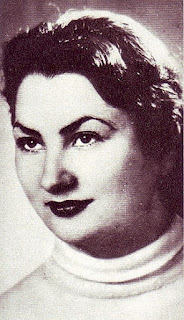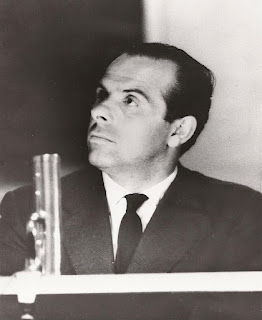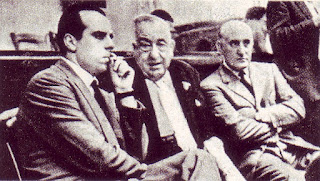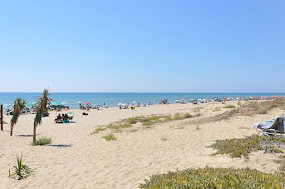NEW - Wilma Montesi - murder victim
‘Body on the beach’ mystery that sparked a national scandal
Wilma Montesi, the woman whose unexplained death in 1953 precipitated a scandal that reached the highest levels of the Italian government, was born on this day in 1932 in Rome. Raised in the Trieste-Salario neighbourhood, little more than a couple of kilometres from central Rome, she was a 21-year-old woman who dreamed of becoming an actress but whose ambitions were known to no one outside her own family and friends until she disappeared from her home in Via Tagliamento on the afternoon of April 9, 1953. Two days afterwards, her semi-naked body was found on the beach at Torvaianica, some 40km (25 miles) south of the capital. The mystery surrounding her death sparked four years of police investigations and conspiracy theories and the resignation of a senior member of prime minister Mario Scelba’s government. On the afternoon of her disappearance, Montesi had declined an invitation to go to the cinema with her mother and sister, saying she would go for a walk instead. After she failed to return in time for supper, her family noticed that her ID papers and some jewellery, a gift from her policeman boyfriend that she always wore, were still in her room. Read more…
___________________________________________________________
Giulio Gatti-Casazza - impresario
Manager who transformed the New York Met
Giulio Gatti-Casazza, the impresario who as general manager transformed the Metropolitan Opera in New York into one of the world’s great houses, was born on this day in 1869 in Udine in northeast Italy. The former general manager at La Scala in Milan, Gatti-Casazza was in charge of the Met for 27 years, from 1908 to 1935. In that time, having brought with him from Milan the brilliant conductor and musical director Arturo Toscanini, he not only attracted almost all of the great opera singers of his era but set the highest standards for the company, which have been maintained to the present day. Gatti-Casazza also pulled off the not inconsiderable feat of rescuing the Met from the brink of bankruptcy after the stock market crash of 1929. The young Gatti-Casazza had studied engineering after leaving school, graduating from the Genoa Naval School of Engineering, yet the love of opera was in the family. His father was manager of the Teatro Comunale, the municipal theatre in Ferrara, where they had moved when Giulio was young, and he succeeded his father in that role in 1893. He proved very effective, combining his knowledge of opera with a natural gift for management. Read more…
___________________________________________________________
Giuseppe Moretti - sculptor
Sienese artist who became famous in the United States
The sculptor Giuseppe Moretti, who became well known in the United States as a prolific creator of public monuments, was born on this day in 1857 in Siena. Moretti's favourite medium was marble and he considered his Head of Christ, which he carved from a block of Alabama marble in 1903, to be his greatest work. The creation which earned him most fame, however, was the 56-foot (17.07m) statue of Vulcan, the Roman god of fire and metalworking, which he made for the 1904 World's Fair in St Louis, Missouri on behalf of the city of Birmingham, Alabama as a symbol of its heritage in the iron and steel industry. Moretti made the statue in clay in New Jersey before overseeing its casting in iron in Birmingham. Vulcan, the largest cast iron statue in the world, was relocated to Alabama State Fairgrounds after the St Louis Exposition before being moved again to the top of Red Mountain, the ridge overlooking Birmingham, which it shares with a number of radio and television transmission towers. Although he spent much of his life away from Italy, it was in his homeland that Moretti developed his love for art and sculpture. Read more…
________________________________________________________
Giuseppe Forlenza – eye surgeon
Napoleon recognised brilliance of ocular specialist
Giuseppe Forlenza, an important 18th century ophthalmologist and surgeon, was born on this day in 1757 in Picerno in the province of Potenza. He became famous for performing successful cataract surgery and for his treatment of eye diseases. Forlenza was born in the region of Basilicata, which at that time was part of the Kingdom of Naples. His father and two uncles were all surgeons. He went to Naples and then on to France to study surgery. He spent two years gaining experience at St George’s Hospital in London and then returned to France where he concentrated on treating eye diseases. Forlenza carried out eye surgery at a retirement home in Paris and performed many remarkable operations on soldiers returning from fighting in Egypt who were suffering from eye problems. He was recognised as a leading eye surgeon by Napoleon, who in a royal decree assigned him to treat eye disease throughout France. Forlenza eventually returned to Italy where he performed many free operations in Turin and Rome. Read more…
__________________________________________________________
Giovanni Battista Vaccarini - architect
Sicilian Baroque designs shaped the look of Catania
Giovanni Battista Vaccarini, the architect who designed many of the important buildings in Sicily’s second city of Catania, was born on this day in 1702 in Palermo. He was responsible for several palaces, including the Palazzo del Municipio, the Palazzo San Giuliano and the Palazzo dell’Università. He completed the rebuilding of a number of churches, including the Chiesa della Badia di Sant’Agata, and designed the Baroque façade of the city’s Duomo – the Cattedrale di Sant’Agata – which had been a ruin. Perhaps his most famous work, though, is the Fontana dell’Elefante, which he placed at the centre of the reconstructed Piazza Duomo, consisting of a marble pedestal and fountains, supporting an ancient Roman statue of an elephant made from lava stone, which in turn has an obelisk mounted on its back, supposedly inspired by Gian Lorenzo Bernini’s Obelisk of Minerva in Rome, which is also borne by an elephant. The monument's nickname in the Sicilian language is "Liotru," a reference to Elidoros, an eighth century wizard who sought, through magic, to make the elephant walk. The statue came to be adopted as the symbol of the city. Read more…


















